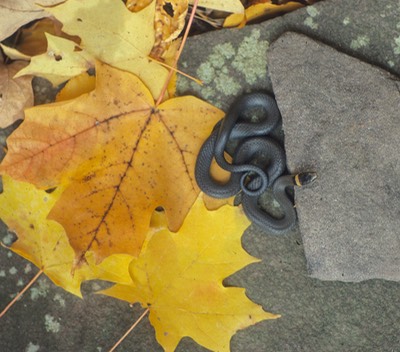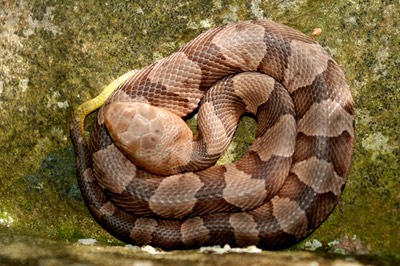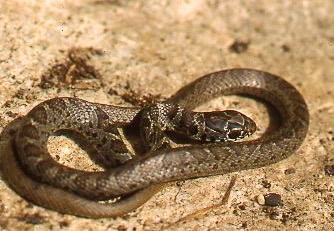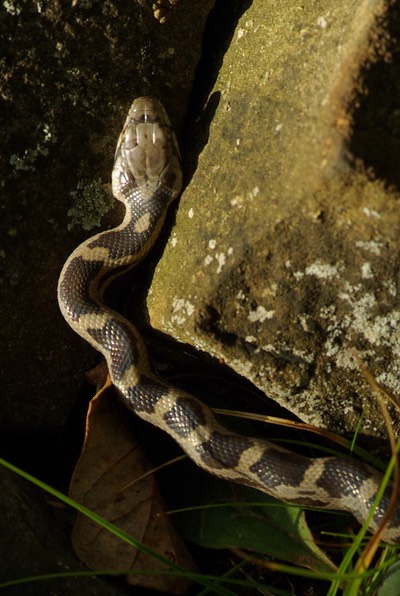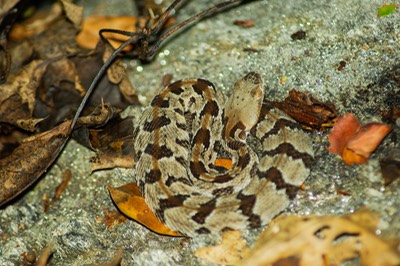...TO HELP YOU IDENTIFY A SNAKE

Eastern Ratsnake
The length of a snake may be useful in identifying it, but not always. People have an incredible ability to overestimate the length of local snakes. We just don’t have any snakes that can completely span a road, not even here in Western Massachusetts! However, if you have a snake in hand, a photo with something measurable nearby, or a nearly complete shed skin, size can be a useful aspect for identification.
Several of our snakes don’t get any larger than 10 or 15 inches. Others start life about that size and grow past three or four feet. So, here’s some thoughts that may help:
If your snake is less than 20 inches long ... All snakes, at some point in their lives are under two feet, so all species fit here. However, 5 of our snakes never get any bigger than this. They are the Wormsnake, Greensnake, Red-bellied, Dekay’s, and Ring-necked. You’ll notice these are solid colored snakes; they’re always the same solid color from the day their born. All the other species that are one color when they are smaller than 15 or 20” are patterned!
If your snake is about 2 to 3 feet long....… that would include all the other species, but many individuals of the following 5 snakes are also in this range: Gartersnake, Ribbonsnake, Milksnake, Hog-nosed, and Copperhead.
If your snake is greater than 4 feet.... there are only 4 possibilities (assuming you haven’t grossly overestimated the size of your backyard Gartersnake). The big snakes are Northern Watersnake, Black Racer, Eastern Ratsnake, and Timber Rattlesnake. Really large Hognose snakes and Copperheads could fit here, too.
Take a look at the Vermont Herp Atlas and scroll down for the “Relative Lengths...” section. It has a great chart showing adult sizes (average and maximum) for their snakes. These data pertain, more or less, to our snakes as well.
A Bit More About The Natural History of Size
In many animals there is a clear difference in the size of adult males and females (Sexual Dimorphism). In some species, males are larger, such as in lions, primates, deer, and many beetles. In others, females are larger, as in some birds of prey (hawks and owls), most bees and ants, turtles, and spiders.
It’s just as variable with our snakes. Females are noticeably larger in these species: Gartersnake, Ribbonsnake, Dekay’s, Red-bellied, Ring-necked (somewhat), and Watersnake. Males are longer in Wormsnake, Northern Racer, Ratsnake, Copperhead, and Timber Rattlesnake. Sexes are about the same size in these species: Greensnake, Hog-nosed, and Milksnake.
...a neonate Watersnake (below).

